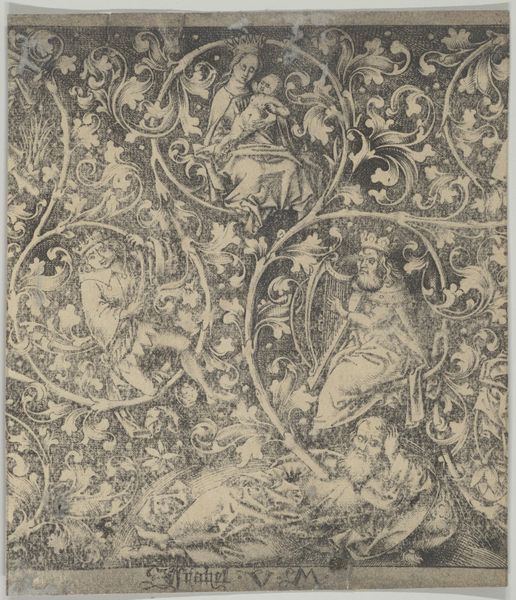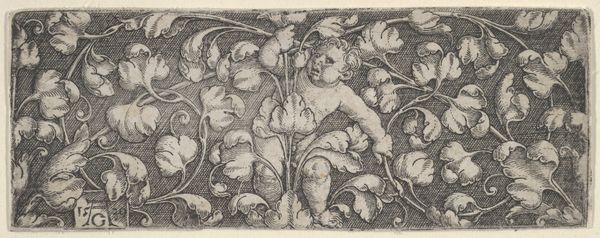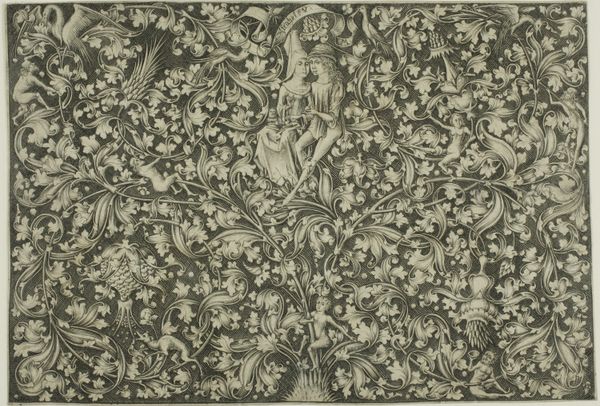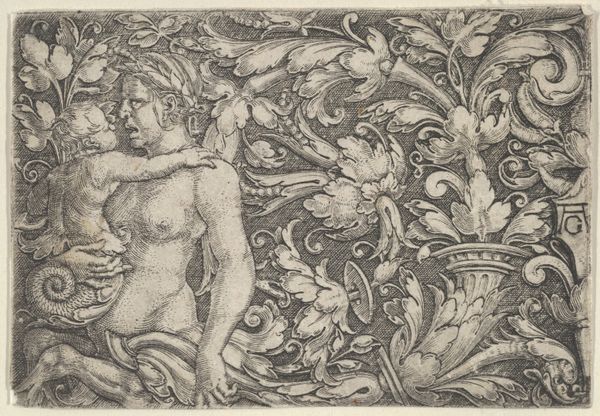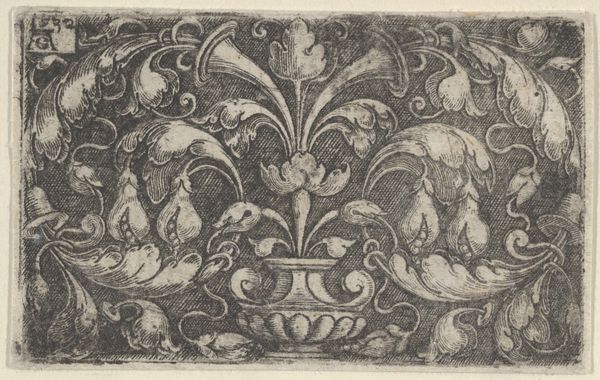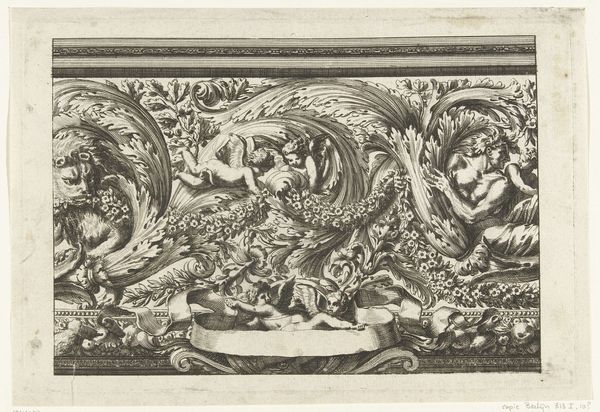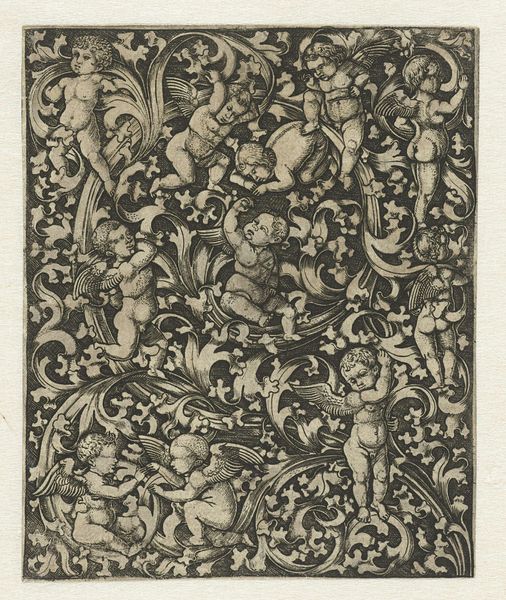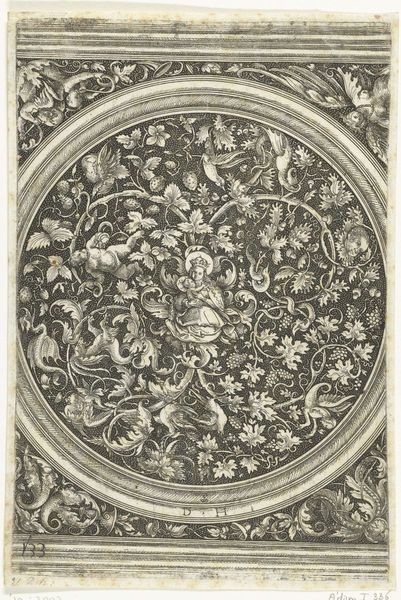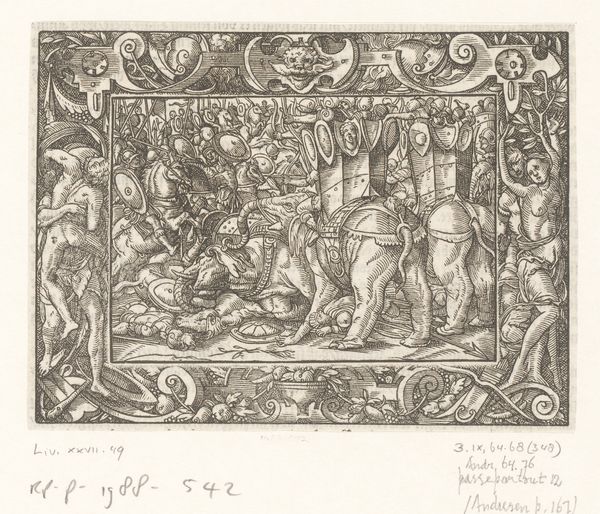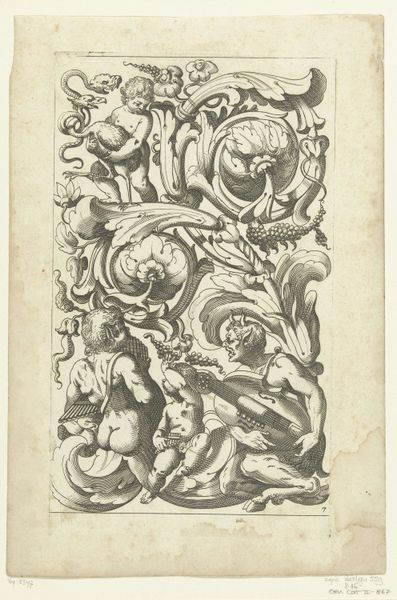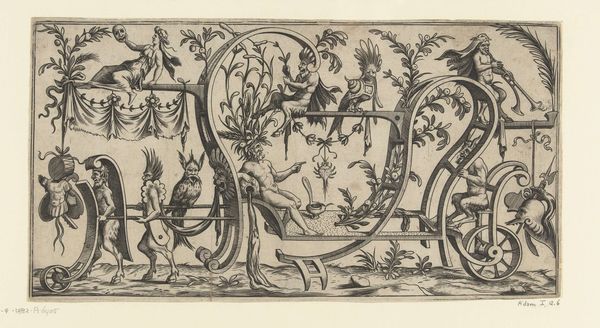
Ornamental Engraving with the Tree of Jesse 1450 - 1503
0:00
0:00
drawing, ornament, print, engraving
#
drawing
#
ornament
#
medieval
# print
#
figuration
#
form
#
pen-ink sketch
#
line
#
history-painting
#
northern-renaissance
#
engraving
Dimensions: Sheet: 4 11/16 × 4 1/16 in. (11.9 × 10.3 cm)
Copyright: Public Domain
Curator: The first thing that strikes me is how dreamlike it seems, almost as if it’s depicting a hidden realm. The figures embedded within all those swirling leaves… there’s a real sense of the subconscious at play here. Editor: That’s fascinating. Well, we’re looking at “Ornamental Engraving with the Tree of Jesse,” an engraving dating from the late 15th to early 16th century by Israhel van Meckenem. It’s a beautiful example of how the Tree of Jesse motif was evolving in Northern Renaissance art. Curator: The "Tree of Jesse"—representing the lineage of Christ through Jesse, father of King David, yes? I find myself drawn to how these figures, especially those crowned individuals nestled amongst the foliage, feel simultaneously powerful and vulnerable. Editor: Exactly. This rendering shows the genealogy of Jesus; you have Jesse at the bottom, then the line of kings that lead up to Mary and Jesus. Engravings like this would have circulated as affordable art for a rising middle class, educating them on biblical narratives, but also reinforcing a visual connection between divine authority and earthly power. Curator: The intricate lines forming the foliage create a sense of constant, organic growth that I believe reflects a continuous line to Jesus; it evokes a feeling of ever-unfolding potential, both spiritual and worldly. But also of inescapable destiny. Editor: Perhaps destiny interpreted through the lens of power. Van Meckenem was astute: engravings were commercial ventures, appealing to particular tastes, in this case blending religious themes with decorative ornament that aligned with elite artistic values of the time. Curator: Absolutely, although the focus is still firmly on symbols rather than overt narratives. It presents us not so much with individual stories as with overarching ideas about lineage and kingship. One wonders what this piece may have communicated on a non-verbal, emotional level? Editor: Undoubtedly, a connection between worldly rule and divine legitimacy, disseminated to new audiences. That interplay is precisely what makes these pieces enduringly captivating, beyond the symbolic weight or artistic merits. Curator: I agree. The image is rich in the type of symbols that carry powerful messages even today. Thank you for giving new dimensions to viewing this. Editor: And thank you for adding deeper perspectives on visual storytelling.
Comments
No comments
Be the first to comment and join the conversation on the ultimate creative platform.

